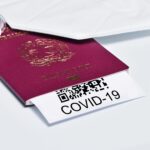- A Comprehensive Breakdown of the Three Astonishing Late February DrawsStrategic Insights: Decoding the Volatile CRS Score Cut-OffThe Pivotal Role of Category-Based Selection in Modern Canadian ImmigrationFrequently Asked Questions
In a remarkable and fast-paced series of events, Immigration, Refugees and Citizenship Canada (IRCC) concluded February 2024 with three separate Express Entry draws in a single week, issuing a staggering total of 13,540 Invitations to Apply (ITAs) for permanent residency. This intense activity signals a dynamic start to the year for Canadian immigration, providing hope and critical insights for candidates worldwide. The draws, which included a general draw, a massive French-language proficiency draw, and another all-program draw, showcased the multifaceted approach IRCC is now taking. This analysis of the latest Express Entry draws delves into the specifics of each round, examines the fluctuating Comprehensive Ranking System (CRS) scores, and explores the strategic implications of Canada’s growing reliance on category-based selection to meet its economic and cultural objectives.
A Comprehensive Breakdown of the Three Astonishing Late February Draws
The final week of February 2024 was anything but ordinary for the Express Entry system. IRCC conducted three distinct draws, each targeting different segments of the candidate pool. The first draw of the week occurred on February 26, when 1,490 candidates were invited in an all-program draw. This type of draw considers candidates from all three main Express Entry programs—the Federal Skilled Worker Program (FSWP), the Canadian Experience Class (CEC), and the Federal Skilled Trades Program (FSTP). The minimum Comprehensive Ranking System (CRS) score required for this round was a notably high 534. Just two days later, on February 28, IRCC held a general draw, again inviting candidates from all programs. This round was significantly larger, with 4,500 ITAs issued and a lower, yet still competitive, CRS cut-off score of 494. The most significant event of the week, however, took place on February 29. In a massive category-based draw for candidates with strong French-language proficiency, IRCC issued an astounding 7,000 invitations. The CRS score for this targeted draw plummeted to just 365, one of the lowest seen in recent history, underscoring the immense advantage for bilingual candidates in the Express Entry pool.
Strategic Insights: Decoding the Volatile CRS Score Cut-Off
The dramatic variation in the CRS score cut-off across the three late-February draws—ranging from a high of 534 to a low of 365—offers crucial strategic insights for prospective immigrants. This volatility is not random; it is a direct result of IRCC’s refined selection strategy that balances broad economic needs with specific, targeted priorities. The high scores of 534 and 494 in the all-program and general draws reflect the intense competition among a broad pool of highly qualified candidates. These draws select individuals based purely on their CRS score, which considers factors like age, education, work experience, and language skills. In contrast, the strikingly low CRS score of 365 in the French-language proficiency draw demonstrates the power of category-based selection. By isolating a specific group of candidates who meet a key national objective—in this case, supporting Francophone communities—IRCC can issue a large number of invitations at a much lower CRS threshold. This creates a distinct and advantageous pathway for candidates with in-demand skills or attributes, even if their overall CRS score is not high enough to be competitive in a general draw. This trend suggests that while a high CRS score remains valuable, developing skills that align with one of Canada’s targeted categories can be an even more effective immigration strategy.
The Pivotal Role of Category-Based Selection in Modern Canadian Immigration
The recent series of draws heavily emphasizes the pivotal role that category-based selection now plays in Canada’s immigration system. Introduced to make Express Entry more responsive to the country’s specific labour market shortages and demographic goals, this system allows IRCC to prioritize candidates with particular professional backgrounds or language abilities. For 2024, IRCC has identified six key categories to target, reflecting the most pressing needs of the Canadian economy. By focusing on these areas, the government aims to ensure that new immigrants can integrate quickly and contribute effectively to sectors facing critical worker shortages. The massive French-language proficiency draw is a prime example of this policy in action, but it is just one of several pathways available. Understanding these categories is essential for any serious Express Entry candidate looking to maximize their chances of receiving an Invitation to Apply.
The key targeted categories for Express Entry in 2024 include:
- French-language proficiency: Candidates who can demonstrate a strong ability in French (NCLC 7 or higher in all four language abilities).
- Healthcare occupations: Professionals such as doctors, nurses, dentists, and physiotherapists.
- Science, Technology, Engineering, and Math (STEM) occupations: Including software developers, data scientists, engineers, and mathematicians.
- Trade occupations: Such as carpenters, plumbers, electricians, and contractors.
- Transport occupations: Including transport truck drivers and aircraft assemblers.
- Agriculture and agri-food occupations: Targeting roles like butchers, farm supervisors, and agricultural service contractors.
Frequently Asked Questions
What is an Express Entry draw?
An Express Entry draw is an event where Immigration, Refugees and Citizenship Canada (IRCC) invites candidates from the Express Entry pool to apply for permanent residency. These draws select candidates based on their Comprehensive Ranking System (CRS) score and, in some cases, specific attributes like language skills or work experience in a targeted sector.
What does CRS score mean?
The Comprehensive Ranking System (CRS) score is a points-based system used to rank candidates in the Express Entry pool. Points are awarded for factors such as age, education, skilled work experience, and proficiency in English or French. A higher CRS score increases a candidate’s chances of being invited to apply for permanent residency.
How does a category-based draw differ from a general draw?
A general draw invites candidates from all Express Entry programs based solely on their CRS score, inviting those with the highest scores. In contrast, a category-based draw targets candidates who, in addition to meeting a minimum CRS score, have specific work experience in an in-demand occupation (like healthcare or trades) or a particular language ability (like French proficiency).
What was the lowest CRS score cut-off in the recent Express Entry draws?
In the series of draws at the end of February 2024, the lowest CRS score cut-off was 365. This score was for the category-based draw specifically targeting candidates with strong French-language proficiency.
Why was the CRS score for the French proficiency draw so much lower?
The CRS score for the French proficiency draw was significantly lower because it targeted a smaller, specific subset of candidates from the entire Express Entry pool. By focusing on this priority group, IRCC was able to invite a large number of candidates without the intense competition found in general draws, thereby lowering the required score.
Talk to us to find out more. ->
The content above is not intended to provide legal advice or opinions of any kind and may not be used for professional or commercial purposes.







